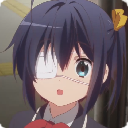Official Everybody Edits Forums
Do you think I could just leave this part blank and it'd be okay? We're just going to replace the whole thing with a header image anyway, right?
You are not logged in.
- Topics: Active | Unanswered
#1 2015-11-03 21:01:31, last edited by madiik (2015-11-03 21:02:01)
- madiik
- Member

- From: floor above Yuuta
- Joined: 2015-02-26
- Posts: 514
i think i could make the next eeartist bot
I have a fancy GUI where you can crop and size the image with a preview of your image
but the issue is how would I know what colors I'm supposed to use
maybe I should PM capasha about my design.
edit: will post image tomorrow
shh i have returned
Offline
#2 2015-11-03 21:55:04
- Prodigy
- Member

- From: The United States of America
- Joined: 2015-07-15
- Posts: 2,613
Re: i think i could make the next eeartist bot
Hmm I hope it works perfectly, Well I wish my best of Luck

Offline
#3 2015-11-03 23:21:17, last edited by hummerz5 (2015-11-03 23:22:46)
- hummerz5
- Member

- From: wait I'm not a secret mod huh
- Joined: 2015-08-10
- Posts: 5,861
Re: i think i could make the next eeartist bot
I imagine there's a proper formula.
I imported my "EE Artist" data by filling a world with every block I had, in the right order. then I took a screenshot of that. Not only does the bot not mistakenly send blocks I don't have, but it also makes for easy data import.
So I import the image, giving matching integer block IDs with RGB counterparts.
For each pixel of the image, I looped through my list of blocks to find the best match. My "Match" was based on difference between R, G, and B, separately. In hindsight, I wonder if Euclid's 3-D distance formula (?) would work as well.
The block evincing the smallest RGB difference was the "match"
Edit: we have a few artists already, but I'm not sure who's still active anyhow.
Offline
#4 2015-11-03 23:56:21
- den3107
- Member
- From: Netherlands
- Joined: 2015-04-24
- Posts: 1,025
Re: i think i could make the next eeartist bot
Making an image smaller:
It depends how you want it to blend the colors. Is it meant to be a pretty picture? then the 'nearest neighbor' is probably the best (average of the pixels that are being merged).
If you want to use it to import it back into a program like EE Artist, it's best to still first pick the nearest neighbor, and then look for the closest known color and switch to that.
When enlarging an image:
I'd say there're 2 options:
1 would be to simply turn one pixel into (eg) 4 pixels, but that will make the image very pixelated (the irony).
Maybe pick the nearest neighbor of the neighbors of all the newly created pixels (and then match that to the closest known color)? Not sure about that one either, as that will quickly make your picture blurry and... oily? The picture will quickly deform, while a pixelated version will simply look terrible, but will be clear.
I'm sure there are many more methods, but these 2 seem the easiest to implement.
Offline
#5 2015-11-04 00:25:10
- Hexagon
- Member
- Joined: 2015-04-22
- Posts: 1,213
Re: i think i could make the next eeartist bot
Try CIEDE2000 https://en.wikipedia.org/wiki/Color_dif … #CIEDE2000 . It works very well (ee-colorwheel uses it and it works pretty good) and is used by many industries in paint color, display calibration, etc...
Offline
[ Started around 1745137925.1494 - Generated in 0.070 seconds, 14 queries executed - Memory usage: 1.43 MiB (Peak: 1.54 MiB) ]